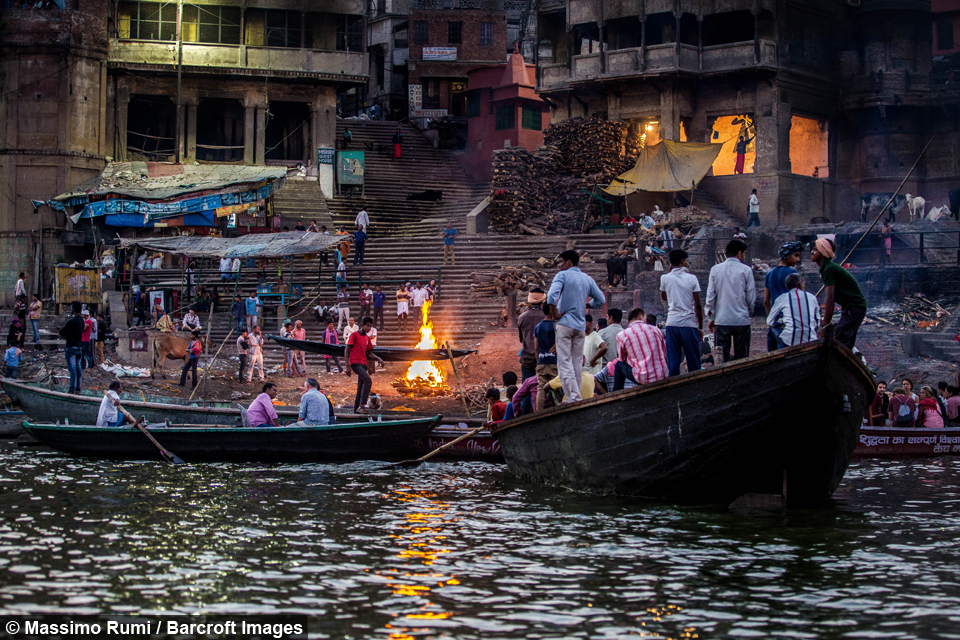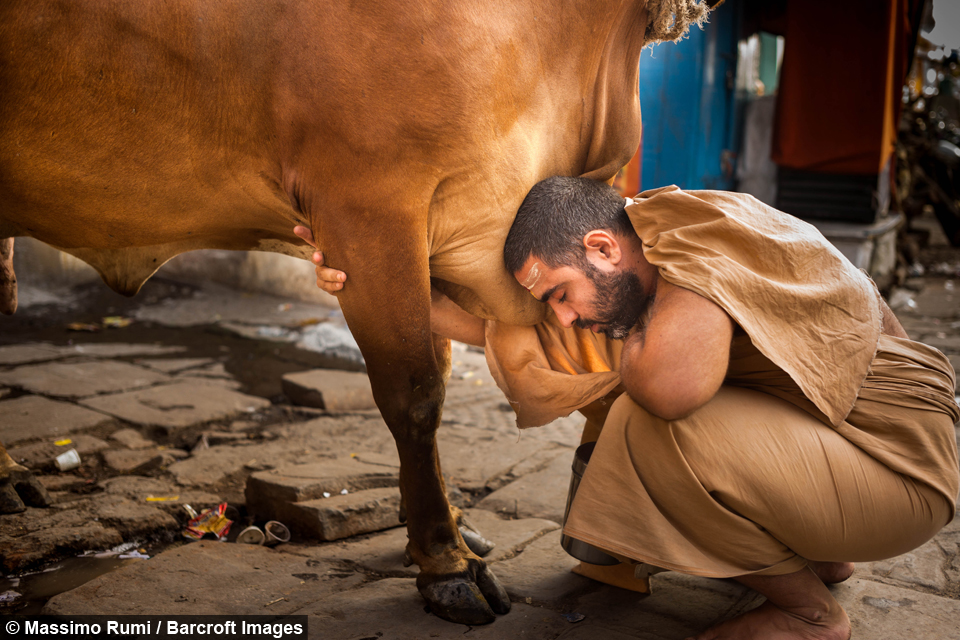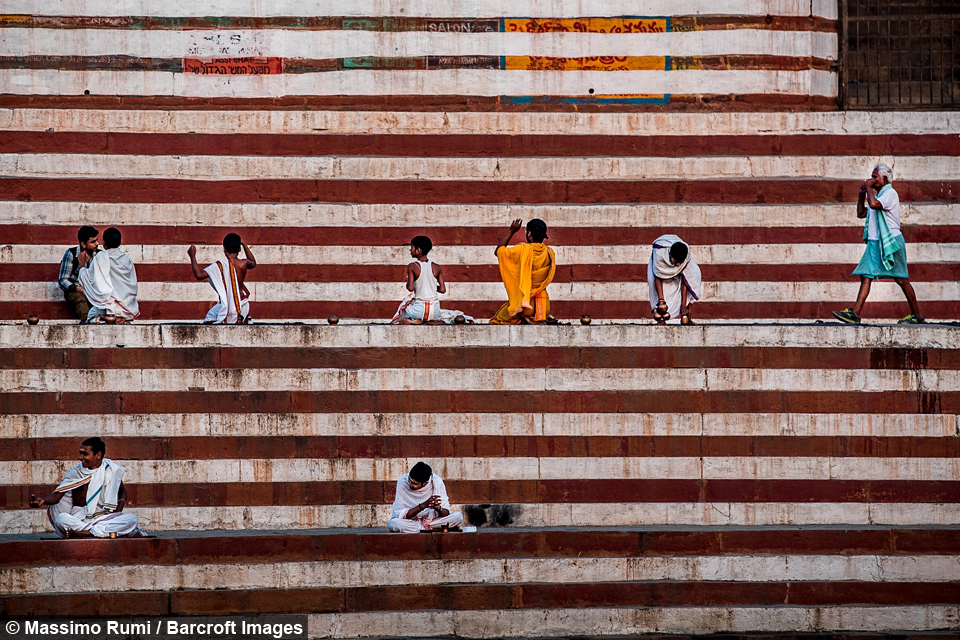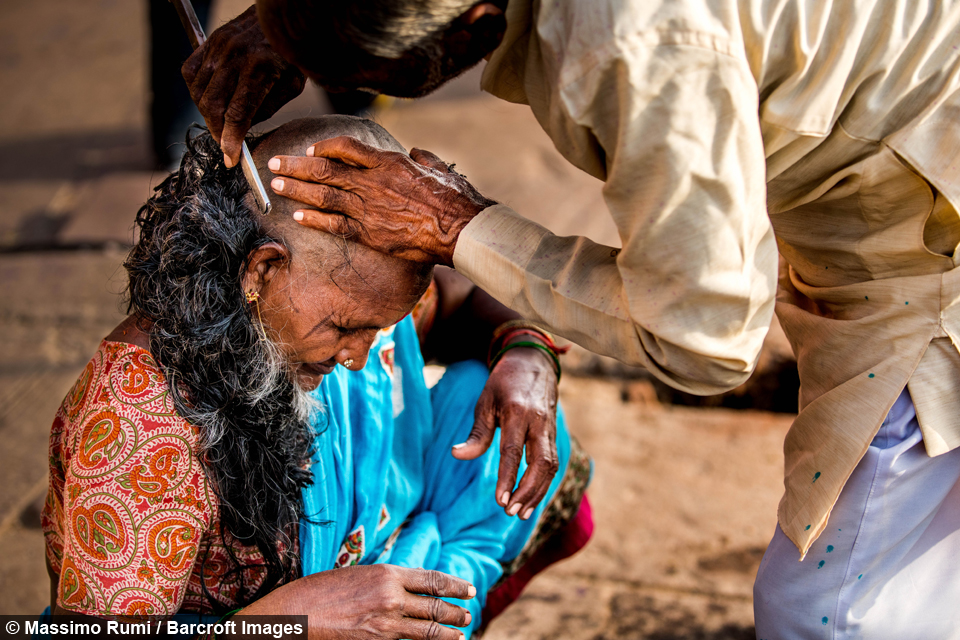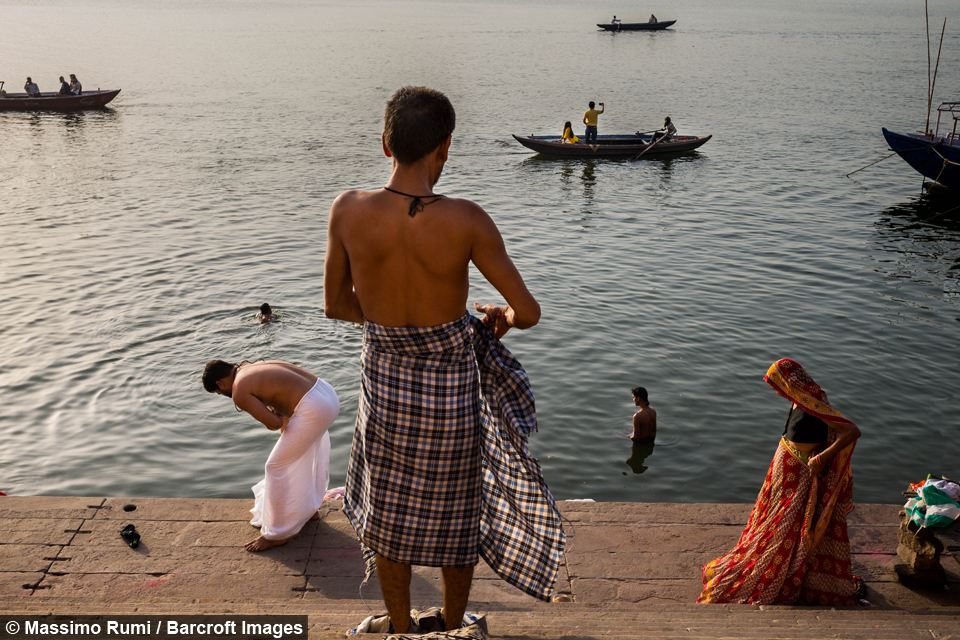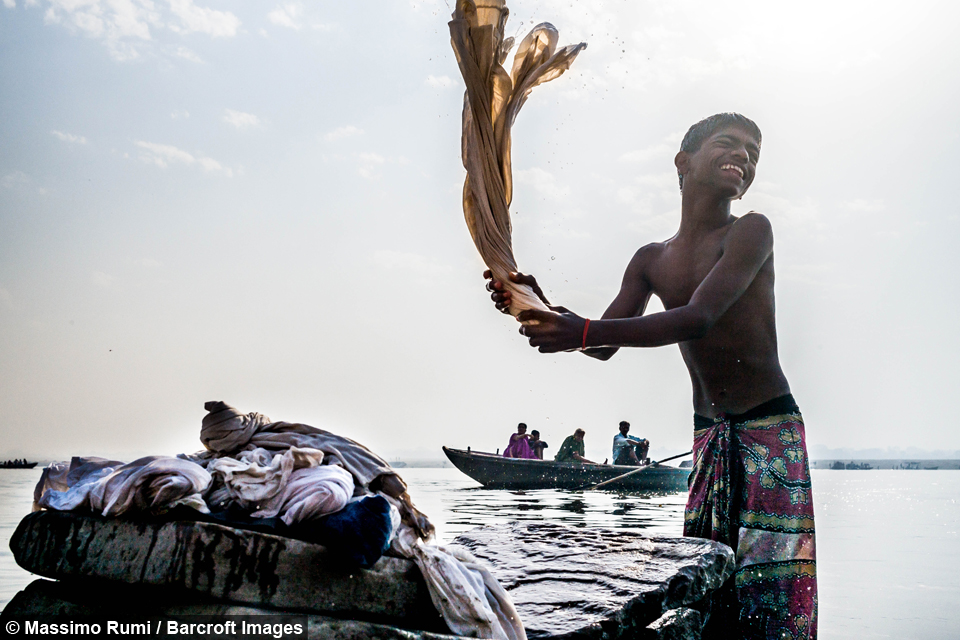Varanasi: The beating heart of Hinduism
By Shannon Lane @shannonroselane
Scroll down for the full story
Situated on the banks of the infamous Ganges River, Varanasi has been a religious hub for several thousand years.
On these embankments, Hindu pilgrims perform daily ritual ablutions by washing in the highly polluted water of the river.
Italian photographer Massimo Rumi travelled to the city to witness the religious practices.
He said "I would go down to the river to board a boat and watch Hindus descend the Ghats to bath in the Ganges, and offer water to the rising sun."
The World Health Organisation suggests that due to the high level of toxins and bacteria, the Ganges River is now almost 3000 times over the suggest ‘safe’ limit. However, that doesn’t deter the people of Varanasi.
Massimo said: "Sunrise is a time to communicate with Mother Ganges. People pray, meditate, drink the water, and dip their bodies three times of absolution. People don’t seem to care about the pollution of the Ganges, they consider the water to be both pure and purifying.”
Death in Varanasi is thought to bring salvation and nirvana, meaning the city is regularly visited by the elderly and sick pilgrims
Massimo said: “Death here is not a crying matter but a cause for celebration and I have never experienced death in such an intimate way, which in contrast made me feel more alive.”
This bustling city is filled with the residents and pilgrims performing regular rituals such as offering their hair to God, and honouring cows - the Hindu symbol of life and Earth.
The photographer said: "I would come across people shaving their heads, kids washing clothes by the river, long lines of pilgrims waiting under the hot sun to enter the city’s temples and people showing special affection to cows.
"In one of the Ghats I came across a Hindu man wrapped in a saffron shawl followed by a cow. At times he would stop and nourish the animal showing intense love and affection, which was reciprocated by the cow in such a human way.”
As one of Hinduism’s seven holy cities, it’s no wonder that the intense spirituality and chaos could be overwhelming to a tourist.
The photographer added: “My week in Varanasi wandering along it’s river front was one of the most deeply moving experiences of my life and an overwhelming sensory experience. The air was thick with smoke of the cremation fires, cow urine, incense, marigolds and roses."
